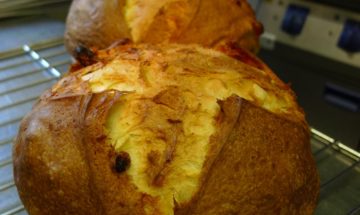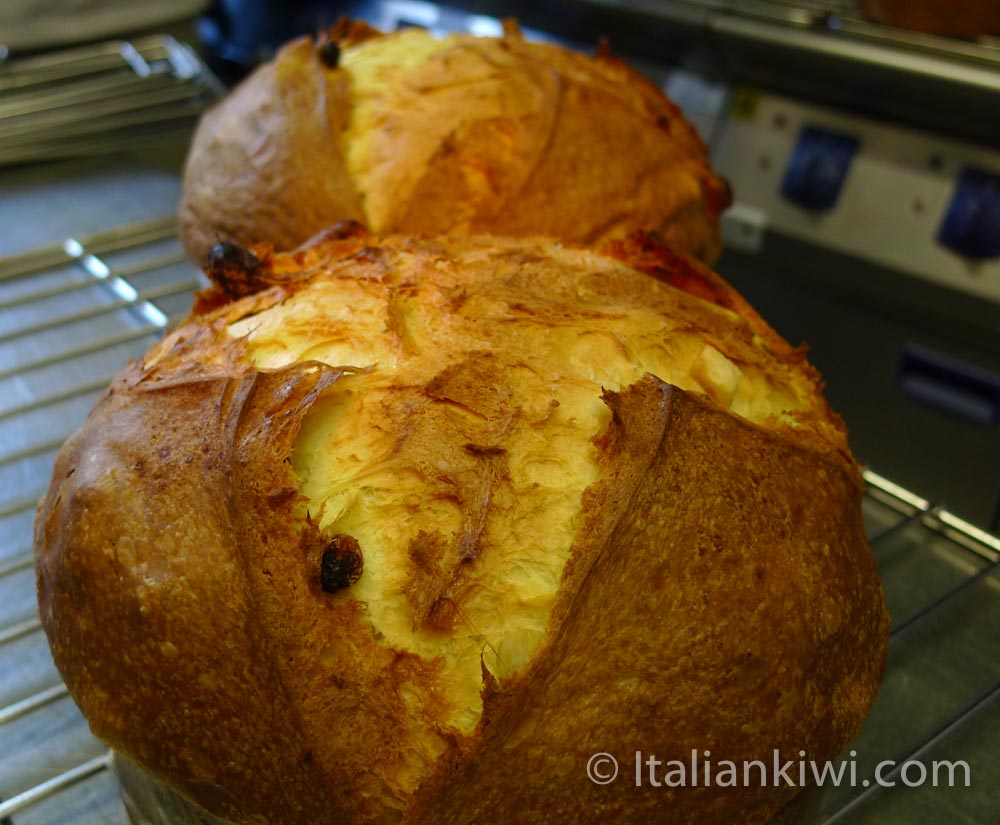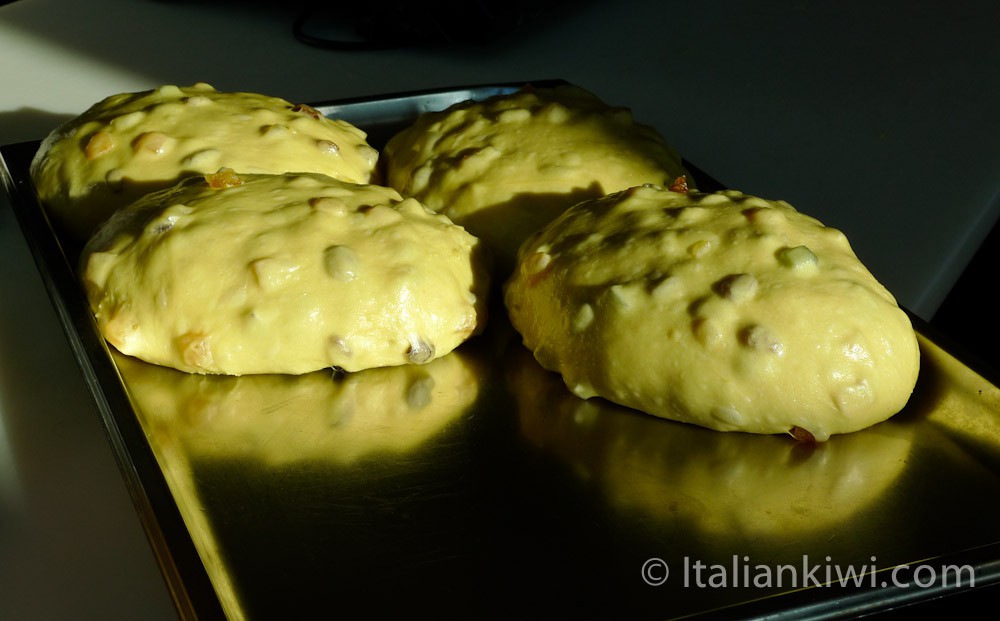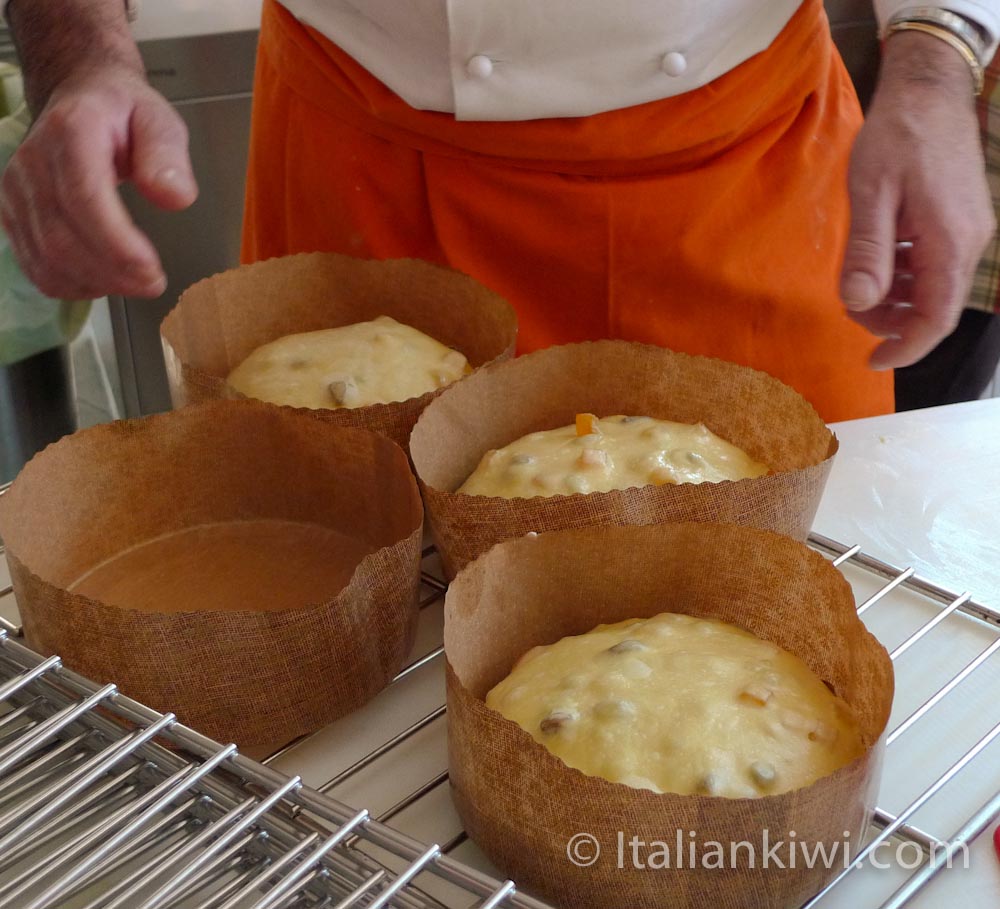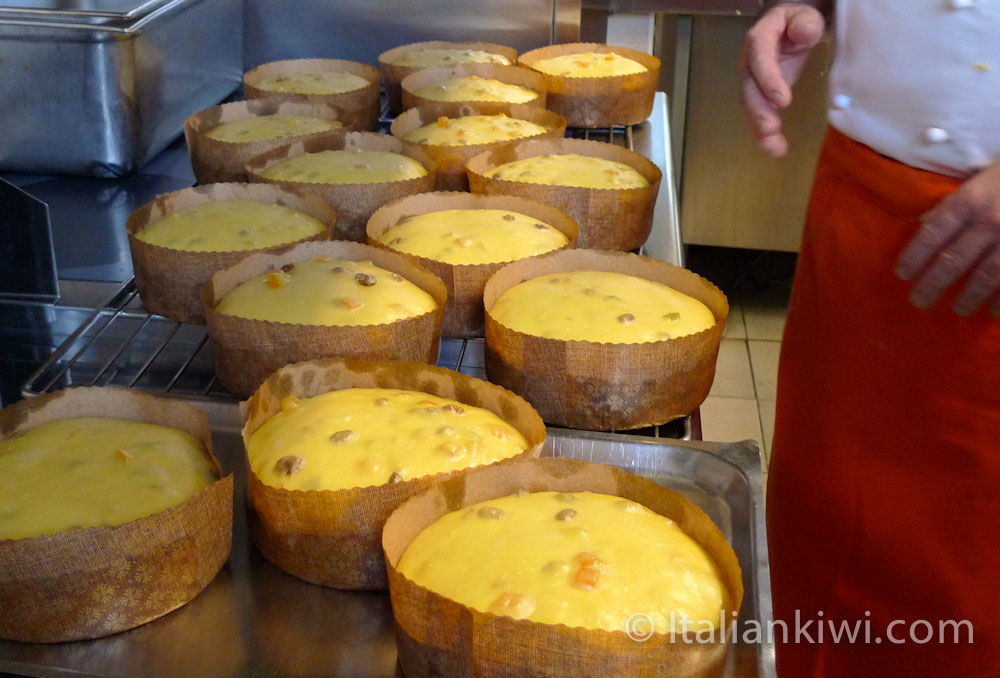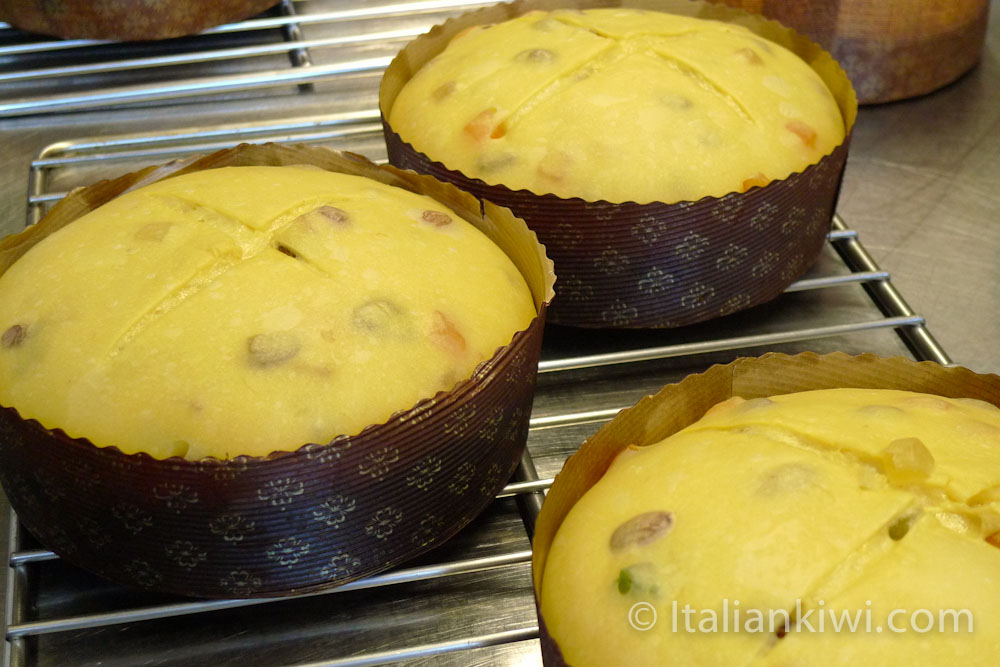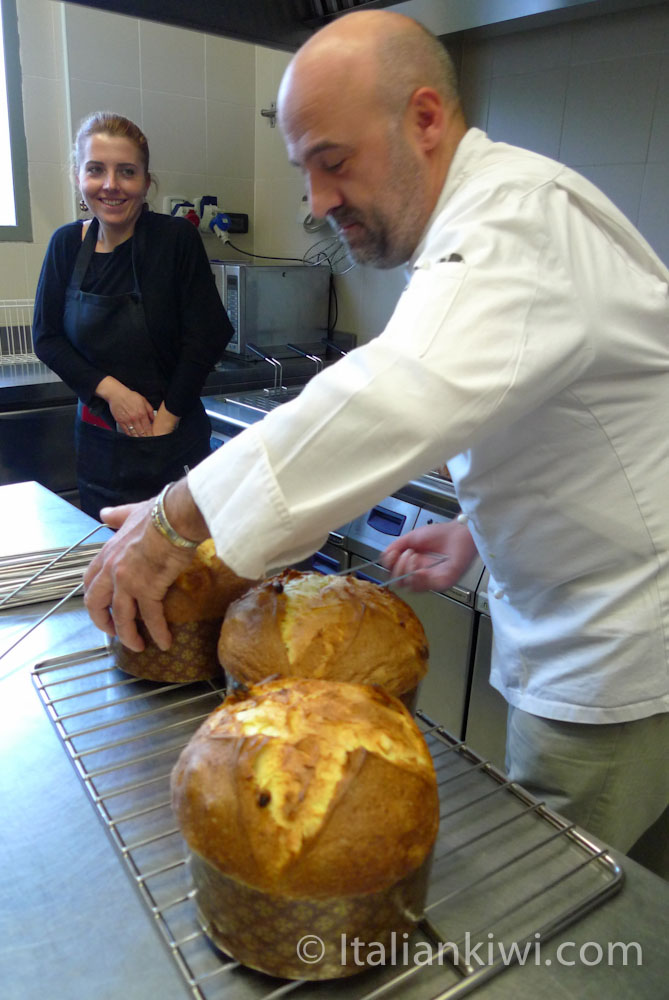Why I haven’t had the courage to make panettone at home
Panettone is a wonderful, fluffy, sweet, fruit-laden cake-like bread that is eaten in Italy at Christmas time. I just had the good fortune to be able to attend a weekend course on how to make it run by a fabulous baker called Marco Avidano who owns his own bakery in Chieri. Now, before you rub your hands in fervent anticipation to start making a panettone as soon as you’ve finished reading this, just sit back down and let me tell you something. So, my friend, Giulia, and I walk into the course, and the first thing the baker who is teaching the class says is, “This recipe is almost impossible to make at home, even though I am presenting you with a simplified version of what we make in my bakery.” Well, we promptly left and went to the wine bar in Eataly, where the course was being held, for 2 days instead. No, just kidding! We sighed sadly and then went on to listen avidly to the very talented Marco for two intense days. The course was incredibly interesting, and I learnt a huge amount about making panettone. The main reason that it is difficult to make it at home is that if you need a special kneading machine (which incidentally costs about 800 euros!). If you try to use your Kitchen Aid, or similar mixer, you are likely to burn the engine (just ask Giulia if you don’t believe me: she has first-hand experience), plus the kneading of the dough using this type of mixer heats up the dough too much and pulls out the necessary fats that are needed to make the panettone taste so very good.
All the steps to making a fluffy panettone
The first afternoon was spent in a full-on lecture with us scribbling notes madly (I managed to fill up half a notebook by the end of the weekend, and that wasn’t because I was writing four words per page). Marco took us through the process of making lievito madre (homemade yeast), which he uses to make his panettoni, which is a complicated subject all by itself without adding the whole panettone bit afterwards. He told us that before machines were made to knead the dough, it was impossible to make a panettone like you can buy in the shops today. A different, less airy form existed, which is called pandolce, basically “sweet bread”, it had a consistency more like….yes, you guessed it….bread.
Even an expert baker can have their problems
The next tricky bit about making a panettone this way is that it takes about 5 days to do the whole process. Who has five days (well, except for a baker who makes it for a living)??? Also, it’s very temperamental, so that if you don’t tend to your yeast animal EXACTLY 12 hours after you fed it last, it will pack a sad, and deflate, so then you have to throw the dough out and start again. I saw this happen during the course, so I can attest that the dough is VERY “diva-ish”: Marco made 20 kg (yes, 20 KG!!!) of dough on Saturday. He took it home overnight to care for it (and said he got up at 5 to feed it again), and then when he was driving back to Eataly, the yeast had a tantrum as it didn’t like the movement and the cold, and the dough fell completely. As Marco knows his yeast inside out, as a backup he made an alternative batch during the night and this one survived so that we could continue with the panettone course.
Panettone dough has the personality of a celebrity diva
Marco told us that at his bakery he makes batches of 90 kg at a time (that’s a LOT of panettoni!). During the rising period, he has his lackeys (the apprentice bakers) at the bakery, who work in shifts check on the rising dough frequently all through the night, like a nurse checks on an intensive care patient, and the moment it reaches the “right” stage, they call Marco, even if it’s 4 in the morning. He then rushes to the bakery and carries out the next delicate steps. He said that nobody, but NOBODY, else is allowed to touch the dough. It’s that sensitive. Thank goodness it’s not a person!! Can you imagine dealing with someone with a personality like that all the time?
If you want the recipe, just let me know
Even during the baking, he hovered over the oven constantly, changing the temperature slightly even so often to allow the panettoni to cook properly. The oven he used was also a super-duper one that injects humidity at the beginning to allow the dough to rise as much as possible (which is also why a cross is cut in the top before baking), and sucks it all out during the cooking process to allow a nice crisp crust to form. Now, after all that work, the panettone was really delicious, but I decided that maybe it’s just easier to cut out the middle man (i.e. all the work) to go to his bakery in Chieri (near Turin) and buy a ready-made one. One of these days, I want to try it, but I have to work up the courage and take out insurance on my Kitchen Aid first in case I blow it up. If anyone would like the recipe for lievito madre or this type of panettone, please do email me. I will be very happy to send it to you. As it’s so long and complicated, I won’t be putting it up on this site though.
I loved doing this course and I want to thank Marco Avidano for being such a great teacher, and Giulia, my passionate cooking friend, for coming to the course with me!
By Lisa Watson
